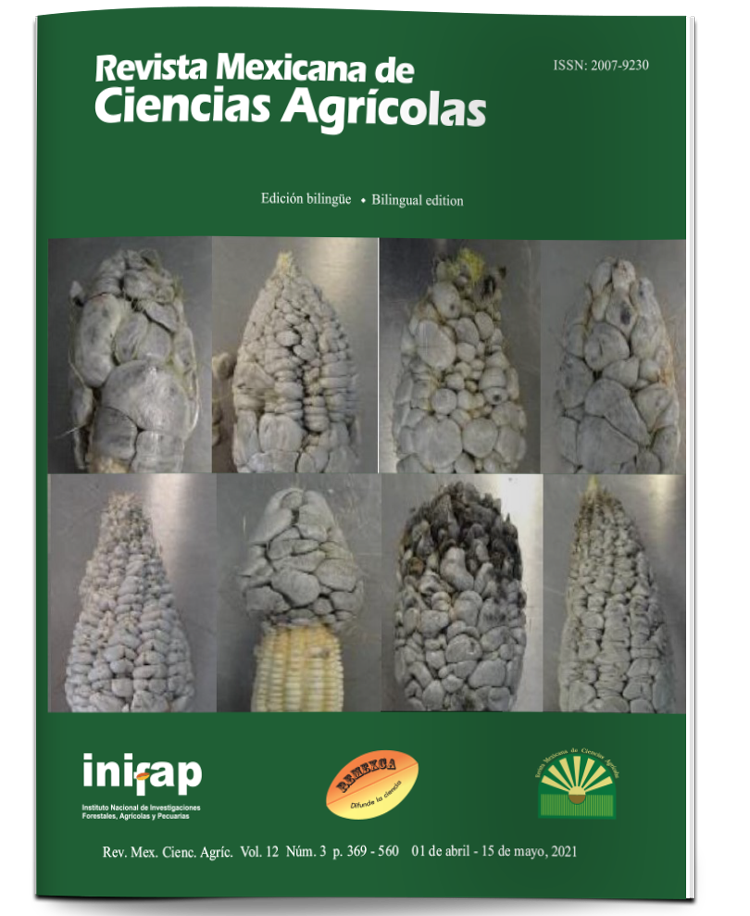Evaluation of nutrient solution recirculation methods for tomato production in short cycles
DOI:
https://doi.org/10.29312/remexca.v12i3.2419Keywords:
closed hydroponic systems, greenhouse, nutritive solutionAbstract
Tomato (Solanum lycopersicum L.) is the most grown vegetable in greenhouse and hydroponics. For easy handling, open hydroponic systems (without recirculation of the nutrient solution) with substrate are the most commonly used in the world. Closed systems (with recirculation) save water and fertilizers, but their technical management is difficult, because over time, the ions less consumed by the plant accumulate, which, when recirculated, cause nutritional imbalances and increases in the EC to levels that affect growth and yield, in addition to the high risk of spreading diseases, especially with cultivation cycles as long as conventionally the tomato is managed. The objective was to compare three methods of recirculation of nutrient solution against an open system, in the agronomic behavior of tomato managed in high population density with cuts to harvest only three clusters per plant. The design was randomly complete blocks with four treatments and seven repetitions, with experimental unit of 20 m2. Morphological variables, dry weight and yield were evaluated. Except for height and diameter of stem, no variable showed statistical difference between treatments. It is concluded that, with the management of the tomatoes plants to harvest three clusters, in a cycle as short as 110 days of transplantation at the end of harvest, it is feasible to use any nutrient solution recirculation system without nutritional imbalances, so that comparing these methods with an open system does not affect the growth or yield of the plants, saving water and fertilizers.
Downloads
Downloads
Published
How to Cite
Issue
Section
License
The authors who publish in Revista Mexicana de Ciencias Agrícolas accept the following conditions:
In accordance with copyright laws, Revista Mexicana de Ciencias Agrícolas recognizes and respects the authors’ moral right and ownership of property rights which will be transferred to the journal for dissemination in open access. Invariably, all the authors have to sign a letter of transfer of property rights and of originality of the article to Instituto Nacional de Investigaciones Forestales, Agrícolas y Pecuarias (INIFAP) [National Institute of Forestry, Agricultural and Livestock Research]. The author(s) must pay a fee for the reception of articles before proceeding to editorial review.
All the texts published by Revista Mexicana de Ciencias Agrícolas —with no exception— are distributed under a Creative Commons License Attribution-NonCommercial 4.0 International (CC BY-NC 4.0), which allows third parties to use the publication as long as the work’s authorship and its first publication in this journal are mentioned.
The author(s) can enter into independent and additional contractual agreements for the nonexclusive distribution of the version of the article published in Revista Mexicana de Ciencias Agrícolas (for example include it into an institutional repository or publish it in a book) as long as it is clearly and explicitly indicated that the work was published for the first time in Revista Mexicana de Ciencias Agrícolas.
For all the above, the authors shall send the Letter-transfer of Property Rights for the first publication duly filled in and signed by the author(s). This form must be sent as a PDF file to: revista_atm@yahoo.com.mx; cienciasagricola@inifap.gob.mx; remexca2017@gmail.
This work is licensed under a Creative Commons Attribution-Noncommercial 4.0 International license.



